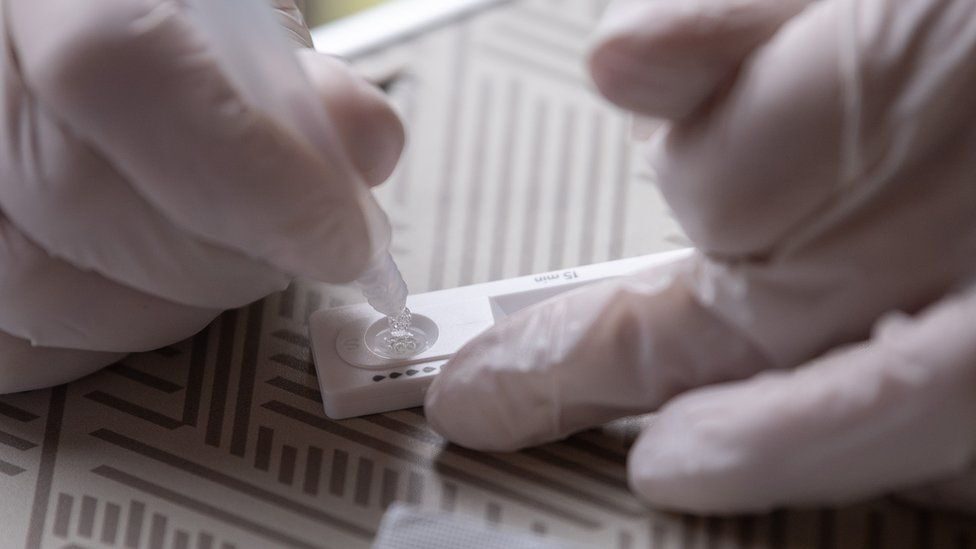Biostaticians are concerned that infections in the community are now so low, that false positives and negatives are vastly outnumbering true cases, leading to real cases being missed and families needlessly being asked to isolate.The latest figures from NHS Test and Trace in secondary schools found 328 positives out of 663,332 tests between February 25th and March 5th. That's 1 in 2,000 pupils, which is far lower than the 1 in 270 that the latest ONS survey suggests is the current community prevalence. Some are concerned this means large numbers of cases are being missed, though the PCR-based ONS survey picks up many of the non-infectious cold positives which the less sensitive lateral flow tests (LFTs) do not. There is no reason to regard missing cold positives as a problem, particularly given the personal and economic cost of isolating positive cases.
Pupils are currently being tested twice a week for coronavirus using lateral flow devices, but real-world data has shown they miss positive cases around 50% of the time.
Similarly, although they pick up 99.9% of negative cases, meaning fewer than 0.1% will be false positives, the prevalence rate is now low enough that false positives will be making a significant contribution to the overall figure.
Previously, positive tests were confirmed using a more accurate polymerase chain reaction (PCR) lab test, but this week the Government admitted it had quietly scrapped the process at the end of January.
It means that thousands of pupils and their families are having to isolate needlessly, and missing more school after months away from classrooms.
In primary schools, 613 positives were found from 721,546 tests, or about 85 in 100,000. This gives an overall school prevalence rate of about 0.067%.
At this rate (if it were the true prevalence), out of a million tests 670 should come back as true positives. However, with a 0.1% false positive rate (a conservative estimate for LFTs, which were found in a report to have a 0.32% false positive rate) there would also be 1,000 false positives. That means 1,000 out of 1,670 positives, or around 60%, would be false. Of course, the 670 positives per million from the last couple of weeks of testing include the false positives, so the actual proportion of false positives will be higher.
Professor Jon Deeks, a biostatistician from the University of Birmingham, told the Telegraph:
We would expect far more false positives than true positives amongst those testing positives in schools. There are many uncertainties but given the DHSC data it seems likely that over 70% of positive test results are false positives, potentially many more. Addition of a confirmatory PCR would add little cost and would most likely reduce false positives to 1 in 1,000,000. The refusal to confirm lateral flow results with PCR is at best perplexing, will make testing less attractive, and create harm by wrongly isolating individuals, families and other close contacts.Confirmatory PCR testing for LFT positives is unlikely to help, however, in terms of weeding out cold positives, as the PCR tests are much more sensitive than the LFTs (picking up many more cold positives) and so are unlikely to give a negative where an LFT has come out as a cold positive.
There is also the question of how many of the tests have been incorrectly carried out, perhaps on purpose, if self-administered, to avoid having to isolate?
Mass testing in schools was always a bad idea - cruel, intrusive, pointless. The high proportion of false positives, with their needless and disruptive requirement to self-isolate, only underlines that fact.




If people are still buying all this bullshit then I can only see one remedy. These people should take the vaccine.
Then it becomes a case of natural selection.